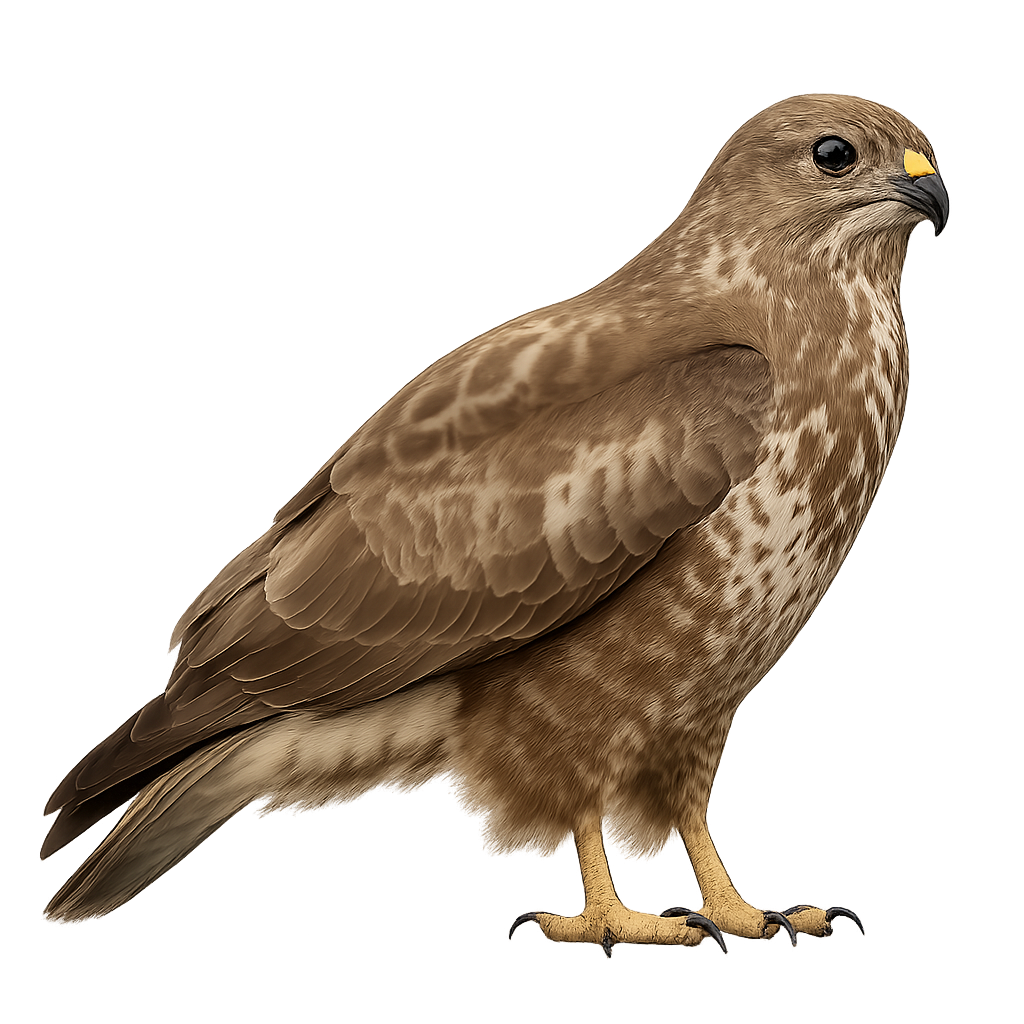Your wildlife photography guide.
Explore the common buzzard in detail, study its behavior, prepare your shots.
Where to observe and photograph the common buzzard in the wild
Learn where and when to spot the common buzzard in the wild, how to identify the species based on distinctive features, and what natural environments it inhabits. The WildlifePhotographer app offers tailored photography tips that reflect the common buzzard’s behavior, helping you capture better wildlife images. Explore the full species profile for key information including description, habitat, active periods, and approach techniques.
Common Buzzard
Scientific name: Buteo buteo

IUCN Status: Least Concern
Family: ACCIPITRIDAE
Group: Birds
Sensitivity to human approach: Suspicious
Minimum approach distance: 50 m
Courtship display: March to April
Incubation: 33-35 jours
Hatchings: April to May
Habitat:
Forests, open areas, and meadows
Activity period :
Primarily active during the day, with peak activity in the morning and late afternoon.
Identification and description:
The Common Buzzard is a medium-sized diurnal raptor, easily recognizable by its often spotted and banded brown and white plumage, which gives it a particularly variable appearance from one individual to another. It primarily inhabits open forests, hedgerows, and agricultural landscapes in Europe, Asia, and North Africa. The Common Buzzard feeds on small mammals, birds, and occasionally insects, which it hunts on the ground, often perched on a tree or pole, waiting for the right moment to swoop down on its prey.
This raptor is known for its characteristic flight, often soaring in the sky in wide circles. The Common Buzzard is also a migratory bird, leaving some of its breeding grounds in Europe to migrate to warmer regions during the winter. While the population of the Common Buzzard is stable in many areas, it can be affected by habitat loss and human persecution.
Recommended lens:
300 mm – adjust based on distance, desired framing (portrait or habitat), and approach conditions.
Photography tips:
Approach discreetly using a telephoto lens to avoid disturbing the Common Buzzard, which can take flight quickly if it feels threatened.
Photograph early in the morning or late in the afternoon, when the light is soft and the buzzard is more active, often hunting in open areas like fields or meadows.
Capture moments of flight: The Common Buzzard is often seen flying, gliding over the land in search of small prey, providing great opportunities for dynamic photos.
Be patient: The buzzard spends a lot of time hunting or resting, so wait for moments when it is less on guard.
The Common Buzzard is a species of minor concern, but it is important to respect its hunting and nesting territory. Do not disturb its natural activities, especially during the breeding season. Follow local conservation guidelines to preserve this species.
The WildlifePhotographer App is coming soon!
Be the first to explore the best nature spots, track rutting seasons, log your observations, and observe more wildlife.
Already 1 431 wildlife lovers subscribed worldwide

